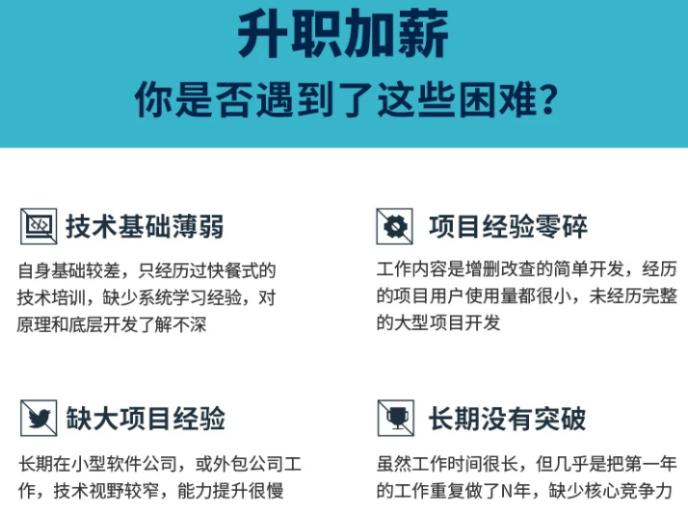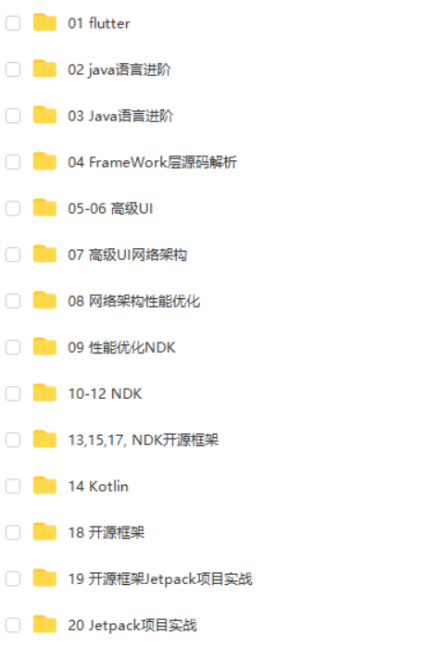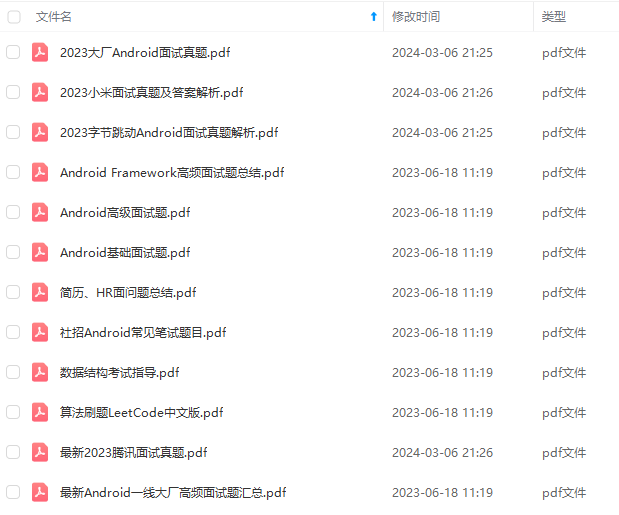public void run() {
//更新UI
}
});
/**
- Activity 源码
*/
public final void runOnUiThread(Runnable action) {
if (Thread.currentThread() != mUiThread) {
mHandler.post(action);
} else {
action.run();
}
}
3.子线程中使用
3.1 子线程直接创建Handler错误
- 子线程不能直接创建Handler,会报异常,因为Looper还没创建,而主线程默认就初始化好Looper。
- 应该先Looper.
private Handler handler2;
/**
-
子线程
*/
private void thread() {
new Thread(new Runnable() {
@Override
public void run() {
handler2 = new Handler(new Handler.Callback() {
@Override
public boolean handleMessage(@NonNull Message msg) {
return false;
}
});
}
}).start();
} -
提示的错误。

3.2 主线程默认初始化Looper
- ActivityThread 类就能主线程找到Looper初始化,Looper.prepareMainLooper();。
public static void main(String[] args) {
.
.
Looper.prepareMainLooper();
.
.
ActivityThread thread = new ActivityThread();
.
.
}
3.3 Handler构造方法查看
- 构造方法中可以看到 mLooper = Looper.myLooper(); 获取的 mLooper 为null,就报上面的那个异常了。
public Handler(@Nullable Callback callback, boolean async) {
.
.
mLooper = Looper.myLooper();
if (mLooper == null) {
throw new RuntimeException(
"Can’t create handler inside thread " + Thread.currentThread()
- " that has not called Looper.prepare()");
}
.
.
}
3.4 子线程正确的创建
- 先执行,Looper.prepare(); 初始化Looper,然后调用loop()方法,再创建Handler。
- 每个线程**Looper.prepare();**只能调用一次,否则会报错。
private Handler handler2;
/**
- 子线程
*/
private void thread() {
new Thread(new Runnable() {
@Override
public void run() {
Looper.prepare();
Looper looper = Looper.myLooper();
looper.loop();
handler2 = new Handler(looper, new Handler.Callback() {
@Override
public boolean handleMessage(@NonNull Message msg) {
return false;
}
});
}
}).start();
}
4.Message
- Message就是一个存放消息的类,是一个链表结构。
4.1 基本参数
public final class Message implements Parcelable {
//用于handler标记处理的
public int what;
//可以传递的int参数1
public int arg1;
//可以传递的int参数2
public int arg2;
//可以传递的obj参数
public Object obj;
//执行时间
public long when;
//传递的bundle
Bundle data;
//Message绑定的Handler
Handler target;
//Handler.post()时传的callback
Runnable callback;
//链表结构
Message next;
4.2 享元模式obtain()
- obtain() 可以重用Message,减少开销提高性能。
- 菜鸟教程-享元模式
/**
- Return a new Message instance from the global pool. Allows us to
- avoid allocating new objects in many cases.
*/
public static Message obtain() {
synchronized (sPoolSync) {
if (sPool != null) {
Message m = sPool;
sPool = m.next;
m.next = null;
m.flags = 0; // clear in-use flag
sPoolSize–;
return m;
}
}
return new Message();
}
4.3 回收recycle()
- 如果发送的延迟消息,或者消息在执行,就会报错,一般我们不用调用recycle方法。
/**
- Return a Message instance to the global pool.
-
- You MUST NOT touch the Message after calling this function because it has
- effectively been freed. It is an error to recycle a message that is currently
- enqueued or that is in the process of being delivered to a Handler.
*/
public void recycle() {
if (isInUse()) {
if (gCheckRecycle) {
throw new IllegalStateException("This message cannot be recycled because it "
- “is still in use.”);
}
return;
}
recycleUnchecked();
}
- Message用完并不是内存回收,只是把里面的内容清空,等下次复用。
- 这个链表也不是无限的,最多就50个节点 。
private static final int MAX_POOL_SIZE = 50;
@UnsupportedAppUsage
void recycleUnchecked() {
// Mark the message as in use while it remains in the recycled object pool.
// Clear out all other details.
flags = FLAG_IN_USE;
what = 0;
arg1 = 0;
arg2 = 0;
obj = null;
replyTo = null;
sendingUid = UID_NONE;
workSourceUid = UID_NONE;
when = 0;
target = null;
callback = null;
data = null;
synchronized (sPoolSync) {
//最多50个
if (sPoolSize < MAX_POOL_SIZE) {
next = sPool;
sPool = this;
sPoolSize++;
}
}
}
5.MessageQueue
- 这是一个阻塞队列。
- 队列是在不停的for循环的,是一个死循环,那不就一直占用着cpu?所以就有了native的方法,处理休眠唤醒。
5.1 MessageQueue每个线程只有一个
- 消息队列每个线程只有一个,跟Looper绑定在一起,在分析Looper时会一起分析。
5.2 消息入队
- 前面我们知道Handler所有消息入队最后都是调用 enqueueMessage(Message msg, long when) 。
- 判断插入消息的位置,还判断是否唤醒操作。
boolean enqueueMessage(Message msg, long when) {
//handler为空就报异常
if (msg.target == null) {
throw new IllegalArgumentException(“Message must have a target.”);
}
//加锁
synchronized (this) {
//消息正在使用会报错
if (msg.isInUse()) {
throw new IllegalStateException(msg + " This message is already in use.“);
}
//判断线程是否存活
if (mQuitting) {
IllegalStateException e = new IllegalStateException(
msg.target + " sending message to a Handler on a dead thread”);
Log.w(TAG, e.getMessage(), e);
msg.recycle();
return false;
}
//标记正在使用
msg.markInUse();
msg.when = when;
//链表头
Message p = mMessages;
boolean needWake;
if (p == null || when == 0 || when < p.when) {
//如果队列为空,或者消息延迟时间为0,或者延迟时间小于mMessage的,就插入在头部
// New head, wake up the event queue if blocked.
msg.next = p;
mMessages = msg;
//唤醒队列
needWake = mBlocked;
} else {
// Inserted within the middle of the queue. Usually we don’t have to wake
// up the event queue unless there is a barrier at the head of the queue
// and the message is the earliest asynchronous message in the queue.
//插入队列中间。通常,除非队列的开头有障碍并且消息是队列中最早的异步消息,否则我们不必唤醒事件队列。
needWake = mBlocked && p.target == null && msg.isAsynchronous();
Message prev;
//在中间插入,根据时间位置插入
for (;😉 {
prev = p;
p = p.next;
if (p == null || when < p.when) {
break;
}
if (needWake && p.isAsynchronous()) {
needWake = false;
}
}
msg.next = p; // invariant: p == prev.next
prev.next = msg;
}
//是否唤醒
// We can assume mPtr != 0 because mQuitting is false.
if (needWake) {
nativeWake(mPtr);
}
}
return true;
}
5.3 消息出队
- 消息出队其实应该放在 Looper.loop() 里面分析更合适,这里先写,后面结合 loop() 一起看会更好。
- 前面 return null; 看注释的意思是,如果looper已经退出和释放,就返回null。
- 这里无限循环,就是一定要取到消息,有消息,阻塞时间为消息的执行时间减去当前时间,如果没消息就阻塞, nativePollOnce(ptr, nextPollTimeoutMillis)。
- 这 next() 方法只有一个地方返回msg,关注这里就行了。
@UnsupportedAppUsage
Message next() {
// Return here if the message loop has already quit and been disposed.
// This can happen if the application tries to restart a looper after quit
// which is not supported.
final long ptr = mPtr;
if (ptr == 0) {
return null;
}
int pendingIdleHandlerCount = -1; // -1 only during first iteration
int nextPollTimeoutMillis = 0;
for (;😉 {
if (nextPollTimeoutMillis != 0) {
Binder.flushPendingCommands();
}
//没消息取就阻塞
nativePollOnce(ptr, nextPollTimeoutMillis);
synchronized (this) {
// Try to retrieve the next message. Return if found.
final long now = SystemClock.uptimeMillis();
Message prevMsg = null;
Message msg = mMessages;
if (msg != null && msg.target == null) {
// Stalled by a barrier. Find the next asynchronous message in the queue.
do {
prevMsg = msg;
msg = msg.next;
} while (msg != null && !msg.isAsynchronous());
}
if (msg != null) {
if (now < msg.when) {
// Next message is not ready. Set a timeout to wake up when it is ready.
//阻塞时间为消息的执行时间减去当前时间
nextPollTimeoutMillis = (int) Math.min(msg.when - now, Integer.MAX_VALUE);
} else {
// Got a message.
mBlocked = false;
if (prevMsg != null) {
prevMsg.next = msg.next;
} else {
mMessages = msg.next;
}
msg.next = null;
if (DEBUG) Log.v(TAG, "Returning message: " + msg);
msg.markInUse();
//只有这里返回msg
return msg;
}
} else {
//没有更多消息,设置为-1,阻塞
// No more messages.
nextPollTimeoutMillis = -1;
}
.
.
}
}
5.4 退出
- 主线程是不能退出。
- 传入的 safe 处理,分别是移除消息未执行的消息,和移除全部消息。
void quit(boolean safe) {
//主线程是不能退出的
if (!mQuitAllowed) {
throw new IllegalStateException(“Main thread not allowed to quit.”);
}
synchronized (this) {
if (mQuitting) {
return;
}
mQuitting = true;
//移除消息
if (safe) {
removeAllFutureMessagesLocked();
} else {
removeAllMessagesLocked();
}
// We can assume mPtr != 0 because mQuitting was previously false.
nativeWake(mPtr);
}
}
/**
- 移除全部消息
*/
private void removeAllMessagesLocked() {
Message p = mMessages;
while (p != null) {
Message n = p.next;
p.recycleUnchecked();
p = n;
}
mMessages = null;
}
/**
- 移除未执行的消息,正在运行的等待完成再回收
*/
private void removeAllFutureMessagesLocked() {
final long now = SystemClock.uptimeMillis();
Message p = mMessages;
if (p != null) {
if (p.when > now) {
//如果执行时间还未到,即未执行的消息,移除回收
removeAllMessagesLocked();
} else {
//等待在执行的消息执行完再回收移除
Message n;
for (;😉 {
n = p.next;
if (n == null) {
return;
}
if (n.when > now) {
break;
}
p = n;
}
p.next = null;
do {
p = n;
n = p.next;
p.recycleUnchecked();
} while (n != null);
}
}
}
6.Looper
- Handler要负责发送消息,MessageQueue消息队列存放消息,Looper就是负责消息循环。
- 商场的扶手电梯大家应该都知道吧,可以把扶手电梯的电机看成Looper,一梯一梯看成消息队列MessageQueue,坐电梯的人看成Message,就这样不停的循环,把消息送去处理。
6.1 ThreadLocal
- Android 开发也要掌握的Java知识 -ThreadLocal 可以看下ThreadLocal原理。
- Looper就是用到了ThreadLocal,Looper内部直接就有一个,还定义成static,final了,也就意味着Android里面获取的ThreadLocal只有这一个。
@UnsupportedAppUsage
static final ThreadLocal sThreadLocal = new ThreadLocal();
6.2 初始化prepare(),为何只能调用一次
- 在prepare()方法可以看到,如果初始化过,就调用就会报错了,所以每个线程最多只有一个Looper,但Handler可以有很多个。
/** Initialize the current thread as a looper.
- This gives you a chance to create handlers that then reference
- this looper, before actually starting the loop. Be sure to call
- {@link #loop()} after calling this method, and end it by calling
- {@link #quit()}.
*/
public static void prepare() {
prepare(true);
}
private static void prepare(boolean quitAllowed) {
//每个线程只能有一个looper
if (sThreadLocal.get() != null) {
throw new RuntimeException(“Only one Looper may be created per thread”);
}
//初始化后设置给sThreadLocal
sThreadLocal.set(new Looper(quitAllowed));
}
6.3 绑定当前线程,创建消息对列
- 创建消息对列,Looper绑定到当前Thread。
- quitAllowed消息队列是否可销毁,主线程的是不可销毁的,子线程默认是可销毁。
private Looper(boolean quitAllowed) {
//创建消息队列
mQueue = new MessageQueue(quitAllowed);
//绑定当前线程
mThread = Thread.currentThread();
}
6.4 拿到当前线程的looper
/**
- Return the Looper object associated with the current thread. Returns
- null if the calling thread is not associated with a Looper.
*/
public static @Nullable Looper myLooper() {
return sThreadLocal.get();
}
6.5 loop()
- 首先拿到当前线程的looper,如果没有prepare()那就是空,报异常。
- 然后就是不停的循环,取出消息,再处理消息。
- Android中为什么主线程不会因为Looper.loop()里的死循环卡死?
/**
- Run the message queue in this thread. Be sure to call
- {@link #quit()} to end the loop.
*/
public static void loop() {
//拿到当前线程的looper,如果没有prepare()那就是空,报异常
final Looper me = myLooper();
if (me == null) {
throw new RuntimeException(“No Looper; Looper.prepare() wasn’t called on this thread.”);
}
if (me.mInLoop) {
Slog.w(TAG, “Loop again would have the queued messages be executed”
- " before this one completed.");
}
.
.
.
for (;😉 {
//不停的取消息
Message msg = queue.next(); // might block
if (msg == null) {
// No message indicates that the message queue is quitting.
return;
}
.
.
try {
//处理消息,msg.target就是绑定的handler
msg.target.dispatchMessage(msg);
if (observer != null) {
observer.messageDispatched(token, msg);
}
dispatchEnd = needEndTime ? SystemClock.uptimeMillis() : 0;
} catch (Exception exception) {
if (observer != null) {
observer.dispatchingThrewException(token, msg, exception);
}
throw exception;
} finally {
ThreadLocalWorkSource.restore(origWorkSource);
if (traceTag != 0) {
Trace.traceEnd(traceTag);
}
}
.
.
//回收消息
msg.recycleUnchecked();
}
}
6.6 退出
- 退出 Looper 其实就是调用 MessageQueue 的退出,传的 safe 不同而已,那这两段注释说啥。
- 传 false ,就是说后面发送消息都不会再处理了,发送消息全部都失败,而且该方法不安全,建议使用 quitSafely()。
- 传 true,跟上面效果差不多,就是MessageQueue的逻辑,移除未执行的消息,正在运行的等待完成。
/**
- Quits the looper.
-
- Causes the {@link #loop} method to terminate without processing any
- more messages in the message queue.
-
- Any attempt to post messages to the queue after the looper is asked to quit will fail.
- For example, the {@link Handler#sendMessage(Message)} method will return false.
-
自我介绍一下,小编13年上海交大毕业,曾经在小公司待过,也去过华为、OPPO等大厂,18年进入阿里一直到现在。
深知大多数初中级Android工程师,想要提升技能,往往是自己摸索成长或者是报班学习,但对于培训机构动则近万的学费,着实压力不小。自己不成体系的自学效果低效又漫长,而且极易碰到天花板技术停滞不前!
因此收集整理了一份《2024年Android移动开发全套学习资料》,初衷也很简单,就是希望能够帮助到想自学提升又不知道该从何学起的朋友,同时减轻大家的负担。





既有适合小白学习的零基础资料,也有适合3年以上经验的小伙伴深入学习提升的进阶课程,基本涵盖了95%以上Android开发知识点,真正体系化!
由于文件比较大,这里只是将部分目录截图出来,每个节点里面都包含大厂面经、学习笔记、源码讲义、实战项目、讲解视频,并且会持续更新!
如果你觉得这些内容对你有帮助,可以扫码获取!!(备注:Android)

总结
本文讲解了我对Android开发现状的一些看法,也许有些人会觉得我的观点不对,但我认为没有绝对的对与错,一切交给时间去证明吧!愿与各位坚守的同胞们互相学习,共同进步!
《互联网大厂面试真题解析、进阶开发核心学习笔记、全套讲解视频、实战项目源码讲义》点击传送门即可获取!
pnx1D0-1712337483074)]
[外链图片转存中…(img-J9AfemBr-1712337483075)]
[外链图片转存中…(img-LAHHNZE7-1712337483075)]
[外链图片转存中…(img-xYV39rGo-1712337483075)]
既有适合小白学习的零基础资料,也有适合3年以上经验的小伙伴深入学习提升的进阶课程,基本涵盖了95%以上Android开发知识点,真正体系化!
由于文件比较大,这里只是将部分目录截图出来,每个节点里面都包含大厂面经、学习笔记、源码讲义、实战项目、讲解视频,并且会持续更新!
如果你觉得这些内容对你有帮助,可以扫码获取!!(备注:Android)

总结
本文讲解了我对Android开发现状的一些看法,也许有些人会觉得我的观点不对,但我认为没有绝对的对与错,一切交给时间去证明吧!愿与各位坚守的同胞们互相学习,共同进步!
《互联网大厂面试真题解析、进阶开发核心学习笔记、全套讲解视频、实战项目源码讲义》点击传送门即可获取!






















 1431
1431

 被折叠的 条评论
为什么被折叠?
被折叠的 条评论
为什么被折叠?








